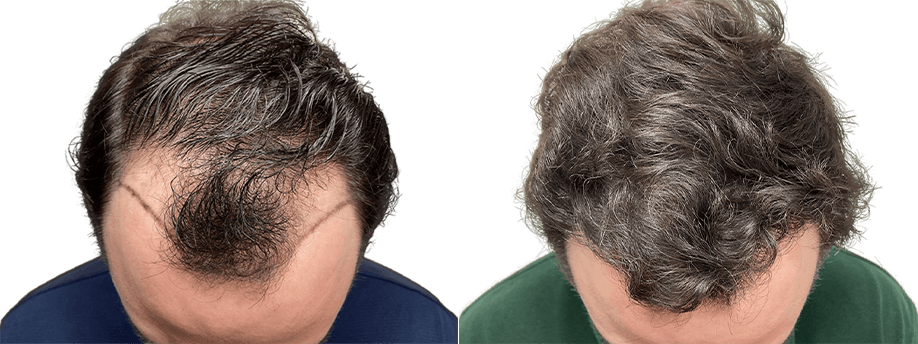Finasteride vs. Minoxidil: which is the superior hair loss treatment?
Hair loss can be a source of concern for many individuals, impacting their self-esteem and confidence. Fortunately, there are effective treatments available to combat hair loss, including Fin#$%^&*() and minoxidil. Both medications have gained popularity in the field of hair restoration, but which one is better? In this blog, we will explore the key differences between Fin#$%^&*() and minoxidil, their mechanisms of action, effectiveness, potential side effects, and considerations. By the end, you’ll be equipped with the knowledge to make an informed decision about the most suitable treatment for your hair loss needs.
- Fin#$%^&*(): The DHT Blocker Fin#$%^&*(), marketed under the brand name Propecia, is an FDA-approved medication primarily used to treat male pattern baldness. It belongs to a class of drugs known as 5-alpha-reductase inhibitors. Fin#$%^&*() works by blocking the enzyme responsible for converting testosterone into dihydrotestosterone (DHT), a hormone that contributes to hair follicle shrinkage and eventual hair loss.
1.1 Mechanism of Action: By inhibiting DHT production, Fin#$%^&*() helps to halt further hair loss and stimulate hair regrowth. It specifically targets the hair follicles on the scalp, improving their overall health and promoting the growth of new hair strands.
1.2 Effectiveness: Clinical studies have demonstrated the effectiveness of Fin#$%^&*() in treating male pattern baldness. In a two-year study, approximately 83% of men who took Fin#$%^&*() maintained or increased their hair count. It is important to note that Fin#$%^&*() is most effective for individuals with early to moderate hair loss and may not be as effective for advanced hair loss or a receding hairline.
1.3 Side Effects and Considerations: While Fin#$%^&*() is generally well-tolerated, it is important to be aware of potential side effects. Some men may experience sexual side effects such as decreased libido, erectile dysfunction, or reduced semen volume. However, these side effects are relatively uncommon and often resolve upon discontinuation of the medication. It is advisable to consult a healthcare professional before starting Fin#$%^&*().
- Minoxidil: The Topical Hair Growth Enhancer Minoxidil, widely known by the brand name Rogaine, is an FDA-approved topical treatment for hair loss. Unlike Fin#$%^&*(), which is primarily used by men, minoxidil can be used by both men and women. Its exact mechanism of action is not fully understood, but it is believed to improve blood flow to the hair follicles, prolong the growth phase of the hair cycle, and stimulate hair regrowth.
2.1 Mechanism of Action: Minoxidil promotes hair regrowth by revitalizing hair follicles, increasing their size, and improving overall hair quality. It is thought to extend the growth phase of the hair cycle, leading to thicker and longer-lasting hair strands.
2.2 Effectiveness: Numerous studies have demonstrated the effectiveness of minoxidil in treating androgenetic alopecia (pattern hair loss) in both men and women. Regular use of minoxidil for at least four months can result in visible improvements in hair density and overall hair growth.
2.3 Side Effects and Considerations: The most common side effect of minoxidil is scalp irritation, which is usually mild and temporary. In some cases, users may experience unwanted hair growth in areas of contact with the solution. It is important to follow the application instructions and consult a healthcare professional if any concerns arise.
- Fin#$%^&*() vs. Minoxidil: Choosing the Right Treatment When deciding between Fin#$%^&*() and minoxidil, several factors should be considered:
3.1 Underlying Cause of Hair Loss: Fin#$%^&*() is particularly effective for hair loss caused by hormonal factors, such as male pattern baldness, as it targets the conversion of testosterone to DHT. Minoxidil, on the other hand, can be effective for various types of hair loss, including genetic and non-genetic causes.
3.2 Treatment Application: Fin#$%^&*() is taken orally as a daily medication, while minoxidil is applied topically to the scalp once or twice a day. Consider your preferences and lifestyle when choosing between the two treatments.
3.3 Combination Therapy: In some cases, combining Fin#$%^&*() and minoxidil can yield synergistic effects, as they work through different mechanisms. Discuss with a healthcare professional if combining the treatments may be beneficial for you.
Conclusion: Fin#$%^&*() and minoxidil are both effective treatments for hair loss, but they differ in their mechanisms of action, application methods, and considerations. Fin#$%^&*() targets hormonal causes of hair loss, while minoxidil stimulates hair follicles and improves blood flow. Factors such as the underlying cause of hair loss, personal preference, potential side effects, and treatment convenience should be taken into account when choosing between the two. Consultation with a healthcare professional can provide valuable insights tailored to your specific needs.
References:
- Drake, L. A., et al. (1999). Fin#$%^&*() treatment of male pattern hair loss in postmenopausal women. Journal of the American Academy of Dermatology, 41(4), 555-557.
- Olsen, E. A., et al. (2002). A randomized clinical trial of 5% topical minoxidil versus 2% topical minoxidil and placebo in the treatment of androgenetic alopecia in men. Journal of the American Academy of Dermatology, 47(3), 377-385.
- Blumeyer, A., et al. (2011). Evidence-based (S3) guideline for the treatment of androgenetic alopecia in women and in men. Journal of the German Society of Dermatology, 9(Suppl 6), S1-S57.
- Guarrera, M., et al. (2018). The management of male and female androgenetic alopecia: A review. Journal of Cosmetic Dermatology, 17(1), 3-15.
- Rossi, A., et al. (2019). Minoxidil use in dermatology, side effects, and recent patents. Recent Patents on Inflammation & Allergy Drug Discovery, 13(1), 31-39.

